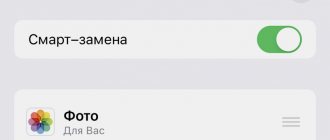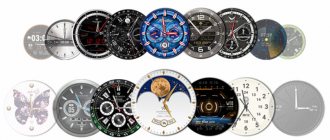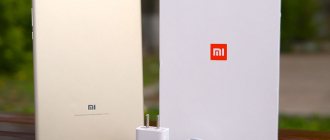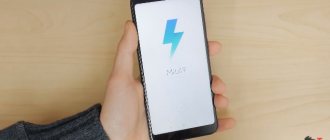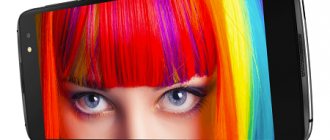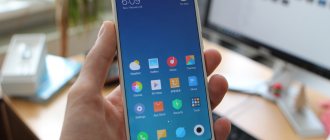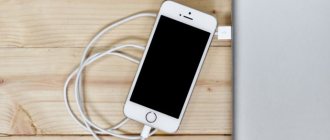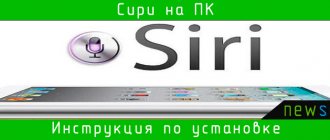Here's everything we know about the iPhone 13
Of course, given the iterative nature of this industry, it's difficult to predict Apple's trajectory two generations into the future when we don't know exactly everything about the iPhone 12. As we've already heard, with more than a month to go, some aspects like pricing and Software features may change in the final moments before release.
All of this is to say that it's very early to discuss iPhone 13 rumors right now, and so the classic warning is that everything you see or hear should be taken seriously.
However, some of these rumbles hint at exciting design decisions that could inform not only future iPhones, but also send ripples through the smartphone industry as we know it.
Other changes
▪️ Fixed an issue that could cause apps to stop responding when syncing data from iCloud Drive. ▪️ Fixed an issue where data roaming could appear as disabled on an eSIM card even when it was enabled. ▪️ Fixed an issue where some phone calls from Saskatchewan could appear to be coming from the US. ▪️ Fixed a bug that could cause sound to disappear when making phone calls over Wi-Fi. ▪️ Fixed an issue that prevented some iPhone 6S and iPhone SE devices from registering for Wi-Fi calling. ▪️ Fixed an issue that could cause the software keyboard to be displayed incorrectly when connecting certain third-party physical keyboards. ▪️ Fixed an issue where the US layout could be incorrectly applied to Japanese physical keyboards. ▪️ Fixed stability issues when opening Control Center when AssistiveTouch is enabled. ▪️ Administrators can now specify domains through which traffic should not be routed when the VPN is always on.
iPhone 13 design: could it be portless?
Imagine that the iPhone 12 was the last generation of Apple phones that had a physical charging port in every model. It's a shocking thought, but Apple may start phasing out Lightning ports starting with one of the iPhone 13 models, and USB Type-C won't be there to replace it.
Yes. One portless iPhone will arrive next year. There will be no USB-C. Eventually, someday they will all be portless.May 13, 2020 Instead, a tweet from tipster Jon Prosser makes it clear: There will be one iPhone without ports in 2021, he says, and they'll all go that route eventually.
"Never USB-C," Prosser adds, squashing some enthusiasts' hopes that Apple would adopt the same standard as Android phones and the vast majority of other modern consumer electronics. The idea of a portless iPhone may seem a little ridiculous, but ironically, it has become more likely.
Since the European Union has taken steps to force all phone manufacturers to use a common charging port. Lightning has been the company's calling card since 2012, when it was introduced with the iPhone 5.
Instead of designing future iPhones to work with the same interface as all Android phones, Apple would be missing out on the very lucrative accessory licensing market it has always enjoyed.
We're guessing the company would prefer to ditch ports entirely and turn to Qi induction as its overall charging solution. Qi is, of course, a wireless charging system common to all smartphones released today.
However, to achieve this, the portless iPhone will need to charge much faster wirelessly than current models. The iPhone 11 Pro wireless charging runs at 7.5W—about a quarter faster than the new OnePlus 8 Pro's new Warp Charge 30 wireless system.
Even the much-criticized Google Pixel 4 has faster wireless charging than the latest iPhones - 11W. But what else can an iPhone do without ports? In theory, eliminating the device's largest entry point would improve durability and water resistance.
It could also help make phones thinner in the future, although given rapidly increasing battery sizes across the industry and the advent of particularly power-hungry 5G networks, it's probably a safer bet that iPhones in 2021 will be larger and possibly thicker than those that are sold today.
iPhone 13 notch and TrueDepth camera
The iconic notch of the iPhone 11 series, which dates back to the 2017 iPhone X, could be reduced to a narrower, thinner shape for the upcoming iPhone 12 range. However, it's important to note that Apple has allegedly experimented with ditching the notch entirely for its yet to be released flagships of 2020.
But this design has reportedly been unveiled for future models. Exclusive: One of the 2020 iPhone prototypes has a 6.7-inch display with Face ID and a TrueDepth camera system located at the top. pic.twitter.com/sAJE7J12ty. September 26, 2020.
Given this, it's possible that Apple could introduce this change for the iPhone 13. Last fall, leaker Ben Geskin posted a rendering on Twitter detailing how the system could work by embedding the entire TrueDepth system and earpiece into the top bezel of the phone.
Although it's not unreasonable to believe that Apple will likely keep the iPhone 12-style Notch for the next generation, given that it has adopted a more gradual, iterative approach to design in recent years.
The company may well introduce a more experimental model in 2021 - I think, no ports, but no Notch either - similar to the original iPhone X. Of course, this is just a guess.
iOS 14: which devices will it support?
iOS 14
- iPhone 11 Pro
- iPhone 11 Pro Max
- iPhone 11
- iPhone XS
- iPhone XS Max
- iPhone XR
- iPhone X
- iPhone 8
- iPhone 8 Plus
- iPhone 7
- iPhone 7 Plus
- iPhone 6s
- iPhone 6s Plus
- iPhone SE
- iPod touch (7th generation)
iPadOS 14
- iPad Pro 12.9-inch (4th generation)
- iPad Pro 11-inch (2nd generation)
- iPad Pro 12.9-inch (3rd generation)
- iPad Pro 11-inch (1st generation)
- iPad Pro 12.9-inch (2nd generation)
- iPad Pro 12.9-inch (1st generation)
- iPad Pro 10.5-inch
- iPad Pro 9.7-inch
- iPad (7th generation)
- iPad (6th generation)
- iPad (5th generation)
- iPad mini (5th generation)
- iPad mini 4
- iPad Air (3rd generation)
- iPad Air 2
iPhone 13 Touch ID: will it come back?
Apple has never released an iPhone with both Face ID and Touch ID before, although that may change for the iPhone 13. In fact, back in August 2020, analyst Ming-Chi Kuo claimed that Apple was considering adding an in-display fingerprint sensor to your 2021 devices.
And that the company views both biometric technologies as complementary, with the potential to work well together. Since then, more recent reports have even raised the possibility that Touch ID could be coming to the iPhone 12.
However, these rumblings are less certain, with conflicting stories from multiple sources - indicating that this feature is likely more of a goal for next year. Given that the current version of Face ID cannot recognize people with masks, and Apple has changed iOS to better accommodate users with face masks.
We suspect the company should at least be thinking about how to bring back Touch ID in a smoother way. A patent recently discovered by AppleInsider sheds light on how Cupertino could handle this using a sophisticated embedded display system.
Which uses an array of micro lenses to focus the lenses on the subject's fingerprint. In theory, this would improve readability, which is usually reduced by screen transparency.
The release date of the iOS 14 operating system has become known
https://www.znak.com/2020-09-15/stala_izvestnaya_data_vyhoda_operacionnoy_sistemy_ios_14 2020.09.15
The new operating system for iPhone - iOS 14 - will be released on devices tomorrow, September 16. This was announced by Apple CEO Tim Cook during the traditional September presentation of new devices.
In addition, the operating systems iPadOS 14 for tablets and WatchOS 7 for watches will be released and available for updates.
As expected, Apple did not present new iPhone 12 smartphones at the presentation. Previously, it was discussed in the industry that due to the coronavirus pandemic, the company had problems with the production of new phones. Back in February of this year, Apple announced a temporary reduction in iPhone shipments around the world due to the situation with the new coronavirus.
At the presentation, Apple showed a new iPad Air model with an A14 Bionic processor, which, according to representatives. With the help of the new chip, the iPad, in particular, will be able to read hand movements above the device in the air. As an example, the company showed a DJ who scratches (a method of playing vinyl records) directly over an iPad.
In addition, the company presented the new Apple Watch Series 6, which is capable of measuring blood oxygen saturation levels.
Do you want independent media in the country? Support Znak.com
Share
Author
Olga Balyuk
On this topic:
appleApple presented a watch that measures oxygen levels in the bloodApple removed four VGTRK applications from the App Store at the request of the SBUDA deputy of the State Duma of the Russian Federation demanded the FAS to check AppleApple's capitalization fell by $180 billionRussian deputy demanded that Apple allow installation of applications bypassing the App StoreApple will produce a million face shields a week for doctorsApple announced a reduction in iPhone supplies worldwide due to coronavirusThe head of the Ministry of Industry and Trade assessed the likelihood of Apple leaving the Russian marketUsers of the new 16-inch MacBook Pro complain about problems with sound and screenA lawsuit was filed against Apple for listening to private conversations recorded by SiriRoskomnadzor began checking Apple to comply with data localization requirementsApple: iOS12 will “double performance” and remind you when it’s time to close InstagramApple has disabled Telegram updates since mid-AprilApple announced that it had found vulnerabilities in its devicesMetropolitan Hilarion: the creators of Apple achieved popularity using the knowledge of the churchYekaterinburg entered the top 3 cities where residents ordered the iPhone 8"Cyborg from Russia" presented the Apple WatchMedia: iPhone 8 awaits "the most radical redesign in history"Apple hinted at developing its own self-driving carThere is a shortage of iPhones in Russian stores
iPhone 13 Specifications
Almost exactly a year ago, Apple bought Intel's modem business for $1 billion. It was the only sensible course of action for Cupertino, which had been battling Qualcomm for years over patent disputes that left some iPhone models at a noticeable network disadvantage compared to modern Android phones.
Apple and Qualcomm will make up eventually, of course, but that doesn't matter—the iPhone maker wants to control its own destiny rather than be beholden to a supplier with whom it has a tenuous relationship at best.
By the time the iPhone 13 is released, this team will have been working under Apple for almost two and a half years, making 2021 the earliest it can launch its first phones with its own modem on board.
However, 2021 will really push it forward, as Fast Company pointed out in the fall. Modems take a long time to develop and undergo a lengthy certification process. The slightest delay could set the project back a year, or even two.
It would seem that 2022 would be a safer bet, although a source cited by Fast Company believes that 2023 is actually a more realistic time frame. Here's hoping we don't have to wait until the iPhone 15 to find out how Apple's modems change the game.
Regardless of which company ends up building the modems inside the iPhone 13, a recent report from DigiTimes (via AppleInsider) claims that Apple could choose to focus the iPhone 13's 5G modem on either sub-6GHz or millimeter wave, depending on the specific market in which the phone will be supplied.
This is interesting because the iPhone 12 lineup will support both sub-6GHz and mmWave across the board, or at least among the Pro variants. This may be a reasonable cost-saving strategy, but with networks in some markets (such as the US) equally dependent on both wireless protocols, it is far from an ideal solution.
iPhone 13 Flip: Can it fold?
At this stage, there is no evidence that Apple will release a foldable iPhone in 2021 alongside the iPhone 13, although this possibility appears to be strengthening with each successive generation, especially as foldable devices become more common and affordable.
Apple has a number of patents to its name relating to phones with foldable displays, some of which are covered in our hub for all things iPhone Flip. Reports over the past two years have claimed that Cupertino has shortlisted several flexible screen candidates, hinting that Apple is definitely exploring the category.
Some third-party mockups and concepts look very tempting, but at this early stage they are more wishes than educated guesses. Once we move past the iPhone 12 launch and start looking seriously at the iPhone 13, we'll likely have a better idea of whether a foldable variant could enter the fray. For now we can only guess.
Safari
The Safari browser in iOS 13.4 received improvements to the Intelligent Tracking Protection feature, which allows you to completely block third-party cookies.
Cross-site cookies are blocked by default, improving privacy. The version for iPadOS 13.4 and macOS 10.15.4 received the same.
The new Safari is the first browser to completely block third-party cookies by default. With this, the Apple WebKit development team wants to set an example for developers of other browsers to do the same.
To be fair, Microsoft's new Chromium-powered Edge browser does a good job of blocking websites from tracking users.
We also fixed an issue in Safari where colors on web pages would not be inverted if Dark Mode and Smart Invert were both active.
We also fixed the incorrect display of CAPTCHA and the invisibility of copied text when pasting when Dark Mode is enabled.
iPhone 13: What we want to see
We'll likely start hearing the first concrete details about the iPhone 13 around the time of the iPhone 12's launch in the fall. This is because Apple's strategy with its upcoming phones will allow us to deduce where it will go after this.
In fact, one of the earliest reports that Apple was planning a compact 5.4-inch variant of the iPhone 12 dropped last September, just days after the iPhone 11 series debuted.
The iPhone 13's cameras will undoubtedly attract a lot of attention. (Image credit: Tom's Guide). Here's what we'd like to see from the iPhone 13 when it actually surfaces, beyond what the rumors suggest.
- Faster wireless charging included in the box: If Apple ditches the Lightning port once and for all, it needs to beef up the slow wireless charging on current iPhones and offer some kind of wireless charging solution in the box with the device.
It's hard to imagine Apple simply telling customers to go with any old Qi pad they might have lying around, as it could result in slow or inefficient charging; however, the company should treat its customers right here and package one of them along with the phone.
- 128GB, standard: This seems likely for the iPhone 12 range. However, if this is not the case, Apple should move with the times and offer a base of 128GB of storage across all iPhone 13 models.
It borders on insulting to spend over a thousand dollars on a premium smartphone that only packs 64GB from the factory, especially given Apple's aversion to microSD expansion.
- Improved camera zoom: Either by hardware, software, or a combination of both, Apple needs to crack the iPhone's photographic abilities when shooting from a distance.
Many smartphone users love having a good ultra-wide lens, but a strong telephoto lens is also important when you can't get close to your subject. Perhaps Apple could learn something from Google's Super Res Zoom, which uses clever algorithms to almost compensate for the lack of a powerful periscope lens.
- 120Hz display: If you've never used a phone with a display like this before, the fast refresh rate display simply makes every scroll, tap, task, and game much more responsive than on standard 60Hz panels.
Personally, we'd settle for 90Hz if 120Hz was considered too expensive for battery life, but a faster refresh rate could make iOS even smoother than it already is, which is already pretty smooth.
We expect the iPhone 12 Pro, with its rumored flatter design, 120Hz Pro Motion OLED display, 5G support and lidar camera, to form the basis for Apple's 2021 devices. So keep a close eye on our iPhone 12 rumors page, in addition to this one, in the coming months as the future of the iPhone takes shape.
What's new in iOS 13?
Now we will break down all the new features of iOS 13 using the iPhone 7 as an example. This is the most popular phone today, which means these features are relevant for the majority of our readers who use Apple technology.
New interface details
- Dark theme - iOS 13 finally has a dark theme for the interface. Already now, all built-in applications on the iPhone can be changed to dark mode. I think that after a while all third-party programs will also get a dark theme, which means using the iPhone will become even more comfortable.
- WiFi and Bluetooth - now in the “Control Center”, or as it is also called the quick access panel, which is called up by swiping from below, you can now not only turn on or off wireless modules, but also select which access point and which device should connect.
Previously, this could only be done from the main settings menu. - Volume control interface - Gone are the huge square animated volume control and silent icons that covered the entire screen.
Now these are small pop-up windows on the left or top of the screen, respectively. At the same time, the icon says on which particular connected device the sound is being adjusted - on the iPhone itself, headphones or speaker. The animation is also accompanied by a pleasant vibration response. - 3D Touch technology has been replaced by Haptic Touch. If earlier on the iPhone 7 you had to press hard on the screen to call up an additional menu for a specific application, now you just need to hold your finger on the icon for a long time. Moreover, the function works on absolutely all models of smartphones and tablets, including those that did not have a 3D screen installed, for example the good old SE.
- The scroll bar that appears when scrolling long screens in applications has become clickable. That is, you can hold it and drag it to instantly move to the desired part of the page without lengthy scrolling across the screen.
Useful functionality
- Download restrictions - remember, there used to be a problem that when connecting to the Internet via a mobile network, there was a restriction on downloading large files. Because of this, it was impossible to download the movie or update the system. You can now enable downloads over cellular data in the iTunes & App Store settings section, and manually set or remove file size limits.
- The unsubscribe request is another issue that has been fixed in iOS that has been annoying users. If you installed an application with a paid subscription, then after deleting it from your phone, the subscription itself did not disappear, and funds continued to be debited from your account. Now, when you uninstall such a program, the system will automatically ask you whether you also need to unsubscribe and thereby save money. Class!
- Find iPhone - the Find function for searching for a missing device now works not only when the phone is online (cellular or WiFi), but also in offline mode “on an airplane”. Now it has become completely impossible to steal an iPhone.
- Dictation - When you activate voice search for iOS 13 features, there is no need to switch languages. The system itself will recognize the language of your speech within those available on the keyboard.
- Dialer - the standard Phone dialing application now has a useful setting to block all calls from unknown numbers. They will be automatically forwarded to your voice mailbox.
- iOS 13 includes built-in support for simultaneous work with several pairs of headphones
- In the Music app, when you listen to a track, text appears on the screen in time with the music. Something like karaoke.
- Smart charging in battery status settings. It works in such a way that the system remembers your schedule for charging your phone and optimizes replenishment of its capacity for minimal wear and tear.
- Memoji are now available on any iPhone. You can create your own character and send it in messages through both built-in and third-party applications. Plus, new options for customizing the appearance of heroes have been added. By the way, you can even set it as your avatar.
- When granting application access to a geolocation, a new menu item has appeared - “Allow this time only.”
- Now it's possible to download and install your own fonts for the editor
Browser
Significant changes have affected the Safari browser. This applies most of all to the download management system.
- Now you can immediately after downloading a file, you can open the download folder and move or delete it. Also, when uploading an image from an iPhone to the site, you can choose its size.
- Another function is detailed customization of the display of a specific site. For example, you can set it to a specific font or version to view.
- You can also download the current page to PDF or an archive directly from the browser, which you can then attach to a message or save on your device.
Files
The file system has become more open.
- Now iOS 13 supports external media - now you can connect memory cards, flash drives or hard drives to your iPhone. Plus, the ability to compress or unload some types of archive folders has been added.
- You can also activate the display of documents from cloud applications used on your phone in the file system, such as iCloud Drive, Google Docs, Yandex.Disk or Cloud Mail.Ru. Here you can scan and save digital documents directly from your phone, which will become instantly available on all other devices.
- Finally, the export menu has been significantly changed. Now all types of operations are grouped by topic, and when you select data transfer via AirDrops, you can see the number of available devices nearby, as well as their names.
WiFi and communication
- The mobile WiFi modem has also been upgraded - now if you use your iPhone as a modem to access the Internet via a cellular network, there is no need to connect to it manually every time, as was before. We connect to it once from another device, for example a laptop. After that, every time you turn on the modem mode on the iPhone, this laptop, with active WiFi, will connect to it automatically without additional confirmation. Also, now there is no automatic disconnection of other devices from the iPhone in modem mode when it is blocked.
- Added support for the WPA3 security standard for WiFi connections, which makes it possible to use a more secure connection with modern routers.
- The new data saving feature in the cellular network settings (Cellular - Data Settings) disables all background processes and allows you to control mobile traffic. Thanks to this, you will not have such a problem when, for example, when you are in roaming, your photos or a system backup are automatically uploaded to the cloud, which is why a lot of money is spent without your knowledge.
Graphic Editor and Photo Albums
- Improved the ability to take screenshots on iPhone. Now the edge you drag automatically snaps to prominent elements in the image for easy cropping. Also added some new elements for editing them.
- iOS 13 adds the ability to take long screenshots. After creating a photo, the editor will suggest which one to use - only the active screen or the entire page. It is active both for built-in applications such as the Safari browser, and for third-party ones - mail, Instagram, etc.
- In addition to redesigning the external interface of the photo album application, new functions have been added to group images by year and month and display them in the feed.
For example, live photos are played without sound while scrolling. Duplicate photo recognition has also been added - duplicate frames will be hidden from the general feed. Well, a small update to “Memories” - when viewing a slideshow in this mode, background music will automatically play, selected based on your preferences in Apple Music - A separate album has been created for screencasts, where all videos recorded from the iPhone screen will be saved.
- The application for editing images and videos has been completely redesigned. Now it is a full-fledged tool for detailed photo modification, no worse than the mobile versions of Photoshop, Lightroom, Snapseed and the like. Now you can safely delete all this and use only the built-in one.
The function of automatically improving the quality of photos and videos also works well - all the changes made remain in the history, which can be easily adjusted to your taste.
Health
Dramatic adjustments have also been made to the Health application.
- This applies not only to the external interface, which now displays all your daily activity in detail.
- Parameters such as the menstrual cycle, breathing, heart rate, food intake, sleep duration and even the frequency of brushing teeth have been added for tracking.
Notes
The functionality of notes has become even wider.
- Now they are displayed in the list along with attached pictures for ease of finding the desired entry.
- Searching for notes now works not only by their text, but also by object data in attached images and recognized text in scanned documents.
- Sorting notes into folders is now available in two levels, and not one, as before. That is, you can create additional folders inside folders. You can do this by simply dragging them on the screen.
- Plus, inside the folders you can also customize your own way of sorting documents. And for each entry there is a separate pop-up menu.
- Added the function of collaborating on notes among several users via the iCloud cloud service. The levels of access to them are also configurable in detail.
The email client app is increasingly catching up with third-party competitors. Now it has become much more convenient to use.
- For example, you can block a specific address from which spam came in one click. It is also possible to activate or disable notifications when receiving a letter from a given recipient.
- You can now use flags of different colors to mark emails
- When writing a letter on the keyboard, an additional functional panel has appeared, from where you can attach a photo or file, scan a document, or write by hand without leaving the editor
- When selecting images from the library, a window with thumbnails is displayed at the bottom of the screen - also without leaving the editor
Reminders
- All reminders are conveniently grouped into customizable lists
- When creating a reminder, you can specify a geolocation. For example, so that it works when getting into or leaving a car with which your iPhone is synchronized.
- You can add other participants from your contact list to your reminder.
- It is now possible to attach photos, files, links to events
- The maps themselves have become more detailed
- It is now possible to create collections of your favorite places on the map and share them with friends
- You can add your favorite places to quick access so you can get directions to them in one click. You can also assign them roles - Home, Work, etc. Addresses can be inserted from the iPhone owner's contact card
- In addition, you can predict your arrival time, taking into account traffic jams, and share it with your friends waiting for you. Convenient if you are late for something. The route itself on the navigator is accompanied by visual graphic arrows and a sound alert
- Added information about public transport and flights
Cards
The navigation has also been redesigned beyond recognition.
Screen time
Screen Time now has several additional settings to limit your child's and yours' phone use. All programs sorted by topic are available for selection. You can also block access to certain sites and control the contacts with whom your child communicates.
These are the most basic changes in iOS 13, but besides them there are many less significant ones, relating to both the improvement of built-in applications, such as Health, Mail and Notes, and the optimization of the system as a whole. Well, needless to say, the new release of the operating system works just fine on the iPhone SE and 7. So you can safely update and explore all the new features of iOS.
